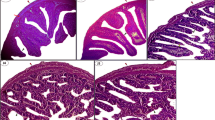Abstract
Ethanol extracts from developed kimchi condiments (KME, KMEE) and mixtures of sub-ingredients (ME, MEE) showed high nitrite scavenging activity. ME was able to scavenge 89% of total nitrite at 50 mg/mL ME and pH 1.2. The nitrite scavenging abilities of KME and KMEE were significantly higher than in ethanol extract from the control condiment. The inhibitory effects on N-nitrosodimethylamine (NDMA) formation by decrease of salted-fermented fish products (Jeot-gal) and increase of condiments in the composition of kimchi were investigated. The modified kimchi (KM) was prepared with new condiments, which included new sub-ingredients and reduced Jeot-gal. The NDMA and its precursor levels were significantly decreased in KM compared with those in the control kimchi (KC). The KM also obtained higher sensory scores than KC. Therefore, the increase of sub-ingredients and reduction of Jeot-gal in kimchi would be recommended for production of reduced-NDMA kimchi while maintaining or even enhancing flavor profiles.



Similar content being viewed by others
References
Jeong SH, Lee HJ, Jung JY, Lee SH, Seo HY, Park WS, Jeon CO. Effects of red pepper powder on microbial communities and metabolites during kimchi fermentation. Int. J. Food Microbiol. 160: 252–259 (2013)
Park JE, Seo JE, Lee JY, Kwon, HJ. Distribution of seven N-nitrosamines in food. Toxicol. Res. 31: 279–288 (2015)
Chung MJ, Lee SH, Sung NJ. Inhibitory effect of whole strawberries, garlic juice or kale juice on endogenous formation of N-nitrosodimethylamine in humans. Cancer Lett. 182: 1–10 (2002)
Lidder S, Webb AJ. Vascular effect of dietary nitrate (as found in green leafy vegetables and beet root) via the nitrate–nitrite–nitric oxide pathway. Brit. J. Clin. Pharmaco. 75: 677–696 (2013)
Kang KH, Lee SJ, Ha ES, Sung NJ, Kim JG, Kim SH, Kim SH, Chung MJ. Effects of nitrite and nitrate contents of Chinese cabbage on formation of N-nitrosodimethylamine during storage of kimchi. J. Korean Soc. Food Sci. Nutr. 45: 117–125 (2016)
Kang KH, Park SY, Kwon KH, Lim HK, Kim SH, Kim JG, Chung MJ. Antioxidant activity and inhibitory effect against oxidative neuronal cell death of kimchi containing a mixture of wild vegetables with nitrite scavenging activity. J. Korean Soc. Food Sci. Nutr. 44: 1458–1469 (2015)
Hotchkiss JH, Barbour JF, Scanlan RA. Analysis of malted barley for N-nitrosodimethylamine. J. Agr. Food Chem. 28: 678–680 (1980)
Kim SH, Kang KH, Kim SH, Lee SH, Lee SH, Ha ES, Sung NJ, Kim JG, Chung MJ. Lactic acid bacteria directly degrade N-nitrosodimethylamine and increase the nitrite-scavenging ability in kimchi. Food Control 71: 101–109 (2017)
Raikos N, Fytianos K, Samara C, Samanidou V. Comparative study of different techniques for nitrate determination in environmental water samples. Fresenius Z. Anal. Chem. 331: 495–498 (1988)
Gou J, Lee HY, Ahn J. Effect of high pressure processing on the quality of squid (Todarodes pacificus) during refrigerated storage. Food Chem. 119: 471–476 (2010)
Dyer WJ, Mounsey YA. Amines in fish muscle II. Development of trimethylamine and other amines. J. Fish Res. Board of Can. 6: 359–367 (1945)
Kim JD, Lee OH, Lee JS, Jung HY, Kim BK, Park KY. Safety effects against nitrite and nitrosamine as well as anti-mutagenic potentials of kale and Angelica keiskei vegetable juices. J. Korean Soc. Food Sci. Nutr. 43: 1207–1216 (2014)
Choi SY, Chung MJ, Lee SJ, Shin JH, Sung NJ. N-nitrosamine inhibition by strawberry, garlic, kale, and the effects of nitrite-scavenging and N-nitrosamine formation by functional compounds in strawberry and garlic. Food Control 18: 485–491 (2007)
Moncada S, Palmer R, Higgs E. Nitric oxide: physiology, pathophysiology, and pharmacology. Pharmacol. Rev. 43: 109–142 (1991)
Lundberg JO, Weitzberg E, Lundberg JM, Alving K. Intragastric nitric oxide production in humans: measurements in expelled air. Gut. 35: 1543–1546 (1994)
Samouilov A, Kuppusamy P, Zweier JL. Evaluation of the magnitude and rate of nitric oxide production from nitrite in biological systems. Arch. Biochem. Biophys. 357: 1–7 (1998)
Kim YM. Present status and prospect of fermented seafood industry in Korea. Food Sci. Ind. 41: 16–33 (2008)
Kang KH, Kim SH, Kim SH, Kim JG, Sung NJ, Lee SJ, Chung MJ. Effects of amount and type of Jeotgal, a traditional Korean salted and fermented seafood, on N-Nitrosodimethylamine formation during storage of kimchi. J. Korean Soc. Food Sci. Nutr. 45: 1302–1309 (2016)
Kim KR, Shin JH, Lee SJ, Kang HH, Kim HS, Sung NJ. The formation of N-nitrosamine in kimchi and salt-fermented fish under simulated gastric digestion. J. Food Hyg. Saf. 17: 94–100 (2002)
Lee SYH, Munerol B, Pollard S, Youdim KA, Pannala AS, Kuhnle GGC, Debnam, ES, Rice-Evans C, Spencer JPE. The reaction of flavanols with nitrous acid protects against N-nitrosamine formation and leads to the formation of nitroso derivatives which inhibit cancer cell growth. Free Radical Biol. Med. 40: 323–334 (2006)
Mheen TI, Kwon TW. Effect of temperature and salt concentration on kimchi fermentation. Kor. J. Food Sci. Technol. 16: 443–450 (1984)
Park JH, Lee HJ. Shifts in kimchi consumption between 2005 and 2015 by region and income level in the Korean population: Korea national health and nutrition examination survey (2005, 2015). Korean J. Community Nutr. 22: 145–158 (2017)
Acknowledgements
This research was supports by a grant from the World Institute of Kimchi (KE1701-5), funded by the Ministry of Science and ICT, Republic of Korea.
Author information
Authors and Affiliations
Corresponding author
Ethics declarations
Conflict of interest
The authors declare no conflict of interest.
Rights and permissions
About this article
Cite this article
Kim, S.H., Kim, J.G., Lee, S. et al. Inhibitory effects on N-nitrosodimethylamine formation by decrease of salted-fermented fish products and increase of condiments in kimchi. Food Sci Biotechnol 26, 1447–1455 (2017). https://doi.org/10.1007/s10068-017-0179-y
Received:
Revised:
Accepted:
Published:
Issue Date:
DOI: https://doi.org/10.1007/s10068-017-0179-y




